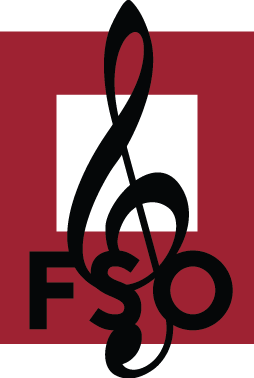
Young musicians typically learn classical pieces as soon as they pick up an instrument, even if they eventually want to merge into other genres. Why is this?
Classical music is the basis for every genre. Popular music shares many similar qualities to its predecessor , but it has also evolved into its own entity with new harmonic structure, a longer duration, and more. Here’s the Frederick Symphony Orchestra’s breakdown on how classical music relates (and differs from) other genres:
How they relate
- The Baroque Era was between 1600 and 1745, and it was highly influential in connecting human emotion and music. The time period and its musicians, including J.S. Bach and Antonio Vivaldi, most famously created chamber music, which is eerily similar to today’s style of rock and roll with the intense and unified composition. Overall, chamber music was also created with the goal of making listeners feel something instead of for only religious purpose like the Medieval Era.
- The Baroque Era also gave birth to the bizarre persona and stage presence that eventually transcended into rock music. For example, Vivaldi was recognizable as “il Prete Rosso,” also known as The Red Priest. This was later mirrored by Prince’s femme fatale persona (and choice to change his name to a symbol), KISS’ eccentric costumes, and David Bowie’s character of Ziggy Stardust.
- The Classical Era was between 1750 and 1820, and it brought the inception of the “chorus.” To composers of this time, including J.C. Bach and Franz Joseph Haydn, the chorus was meant to be a short, memorable melody that was often repeated throughout the song. Sound familiar? One of the first and most famous examples was the first four notes of Ludwig van Beethoven’s Symphony No. 5. Today, the chorus remains the part of a song that is repeated after each verse, typically by more than one singer, and musical artists use it for catchy lyrics and a recognizable melody.
- The Romantic Era was between 1820 and 1920. Like the Baroque Era, romanticism also redeemed the aspect of self expression in composition and was mainly forged by an individual’s inspiration and beliefs. In fact, Led Zeppelin cites romanticism as one of their biggest influences, and the band often dabbled in mysticism, a strikingly similar connection to the fantastical influence of Pyotr Ilyich Tchaikovsky and Frederic Chopin.
How they differ
- Popular songs are usually briefer (less than 5 minutes) than most classical compositions, which can range anywhere from 20 seconds to hours long.
- No matter the genre, today’s popular music is largely vocal thanks to the boom of radio, television, online music streaming, and more. While it can be edited for these forms of listening and recording, classical music is really made for live performance.
- The harmonic structure in classical music is much more complicated than that of popular music, which often times uses simple chords to create a composition. For example, a comedy rock band did a skit about “four chord songs,” citing that almost every great pop hit from the last 40 years had the same four chords, from Journey’s Don’t Stop Believin’ and Elton John’s Can You Feel The Love Tonight to Bon Jovi’s It’s My Life and Richard Marx’s Right Here Waiting.
As music grows and innovates, each genre takes bits and pieces from one another. Modern composer Philip Glass wrote the Low Symphony album based on David Bowie’s rock album Low while pianist George Gershwin was influenced by early jazz of the 1920s.
Music is ever-changing and evolving, and the FSO can’t wait to see what comes next. To see how we’re influenced by the different genres around us, grab tickets to our June 2018 concert, FSO Meets The Beatles:
